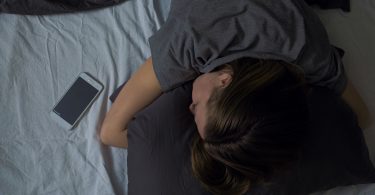
We look into night sky every day, noticing different appearance of moon. We see a bright circle to narrow crescent and sometimes there is no moon. Moon that we see at different times of the month are called the Moon’s phases.As we know moon does not produce light, Sunlight reflect on the moon’s surface hence it emits light. Following are different phases of moon-
| New | We cannot see the Moon |
| Waxing Crescent: | In the Northern Hemisphere, we see the waxing crescent phase as a thin crescent of light on the right |
| First Quarter | first quarter phase as a half moon |
| Waxing Gibbous | The waxing gibbous phase is between a half moon and full moon. Waxing means it is getting bigger |
| Full | We can see the Moon completely illuminated during full moons |
| Waning Gibbous | The waning gibbous phase is between a full moon and a half moon. Waning means it is getting smaller. |
| Third Quarter | We see the third quarter moon as a half moon, too. It is the opposite half as illuminated in the first quarter moon |
| Waning Crescent | The Moon can still look quite full a few days after Full Moon in the WaningGibbous phase1. |
The lunar cycle has an impact on human reproduction, in particular fertility, menstruation, and birth rate.Melatonin levels appear to correlate with the menstrual cycle. Admittance to hospitals and emergency units because of various causes (cardiovascular and acute coronary events, haemorrhage, diarrhoea, urinary retention) correlated with moon phases. In addition, other events associated with human behaviour, such as traffic accidents, crimes, and suicides, appeared to be influenced by the lunar cycle. However, a number of reports find no correlation between the lunar cycle and human reproduction and admittance to clinics and emergency units2.
Hence, Moon’s Cycle produces Physical and mental-emotional changes that correspond to Homoeopathic remedies.In 1931, ‘Times of the Remedies’, about 186 remedies were used in this work by Dr C.M.Boger. He emphasised on ‘Moon Phases’ in action of drugs. It was his extensive research work carried on this, caused advancement of homoeopathic science which gave new angle of vision in prescription.This work contains table of moon phases- first quarter, full moon, last quarter and new moon. Table consist of an enumeration of the time, at which successful prescription was made. When patient reported striking relief in symptoms, time was marked in phase of moon. Numbers mentioned in tables denotes number of cases where remedy was prescribed was successful in bringing out results3.
Moon phases4:
| Name of remedies | New moon | First quarter | Full moon | Last quarter |
| Arsenic Album | 22 | 30 | 19 | 15 |
| Calcarea carb | 23 | 23 | 24 | 16 |
| Lachasis | 15 | 12 | 20 | 14 |
| Lycopodium | 15 | 12 | 20 | 14 |
| Nux vomica | 20 | 10 | 5 | 13 |
| Phosphorous | 21 | 20 | 51 | 32 |
| Pulsatilla | 21 | 28 | 19 | 29 |
| Rhustox | 27 | 15 | 10 | 18 |
| Sepia | 15 | 19 | 10 | 26 |
| Sulphur | 20 | 12 | 25 | 29 |
- https://www.timeanddate.com/astronomy/moon/phases.html
- Zimecki M. The lunar cycle: effects on human and animal behavior and physiology. PostepyHig Med Dosw (Online). 2006;60:1-7. PMID: 16407788.
- Tiwari, S.K. (2005) Essentials of repertorization. 5th edn. New Delhi: B. Jain.
- Boger, C.M. (2020) Times of the remedies and Moon Phases. Noida, U.P, India : B. Jain Publishers (P) Ltd.
About the Auhtor:
Dr Renita Joshma D Souza, Dr Rita Chakraborty





